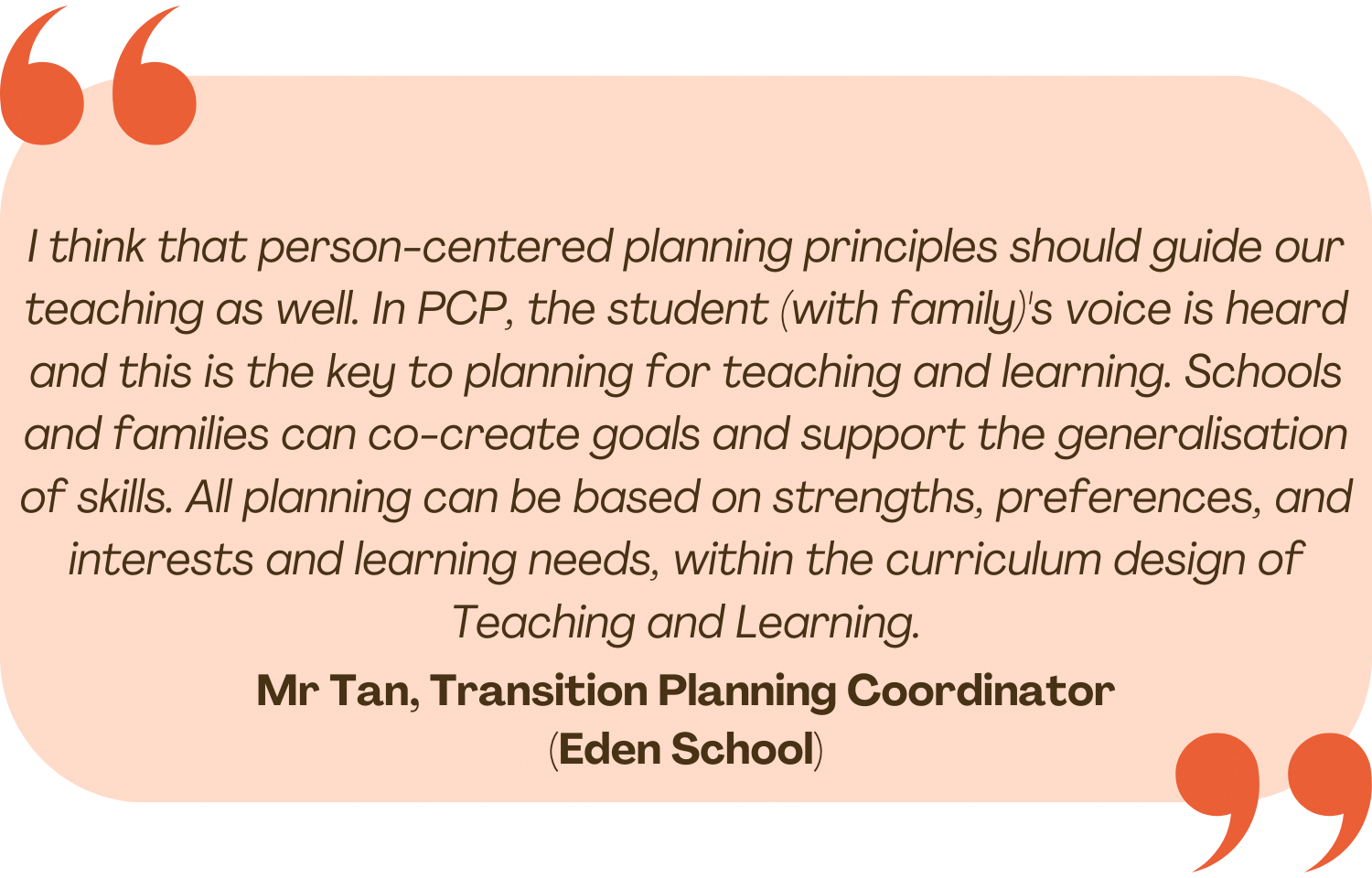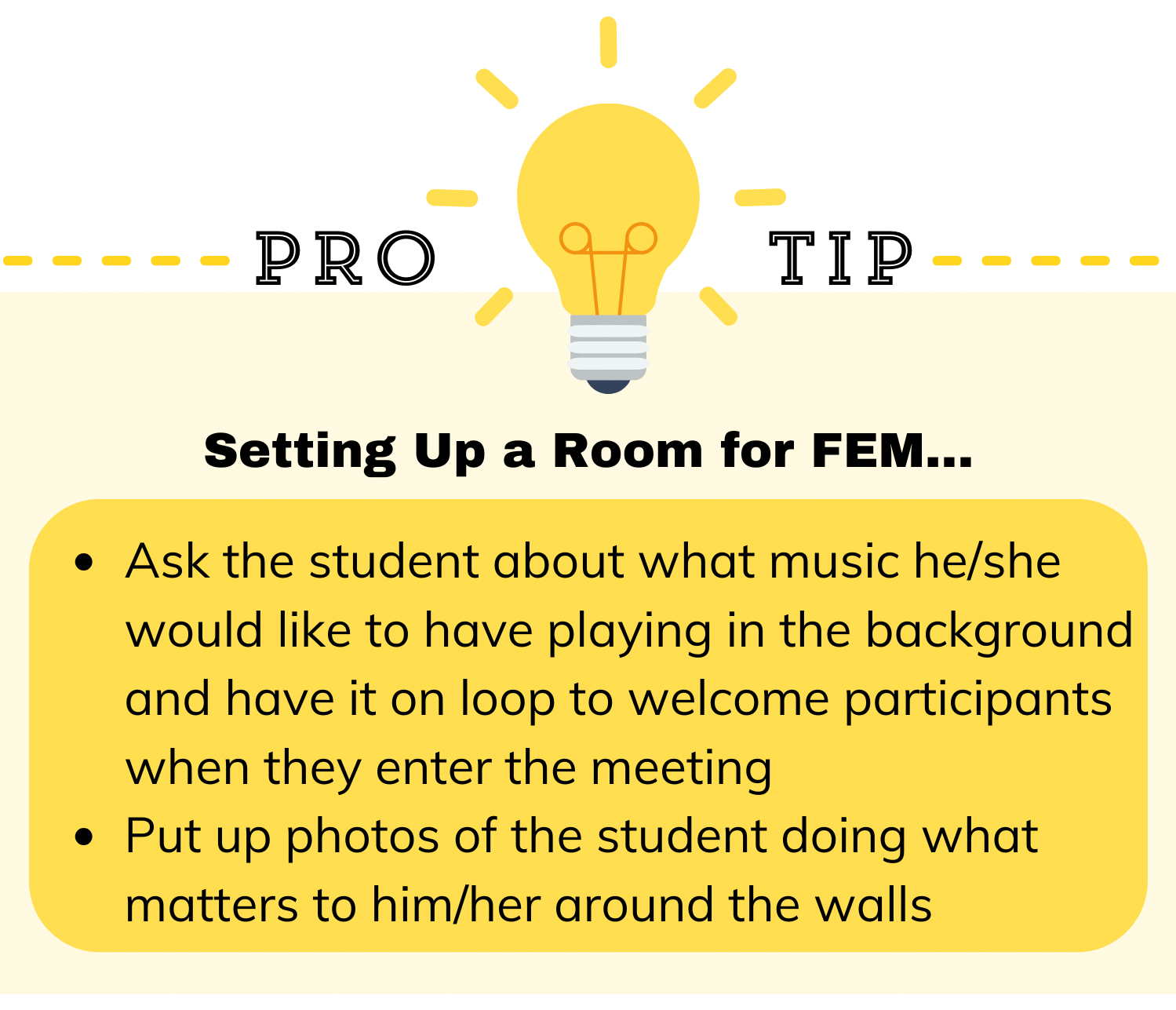Preparing for FEM
The success of FEM hinges on thoughtful preparation before the meeting itself takes place. This involves preparing the meeting’s participants, materials, and ensuring that the room is properly set-up and ready with relevant resources for an effective FEM.
Effective facilitation is important for a successful FEM. Key aspects of facilitation include active listening, goal-setting, planning, chairing a meeting and time-keeping. These practices help create an inclusive environment and ensure a fruitful conversation for all participants.
a) Preparing the Participants
Determining Meeting Attendees
Besides the student, everyone important to the student should be invited to the meeting. This may include the student’s family members, caregivers, significant adult figures, teachers and relevant professionals in the student’s life such as speech therapists, occupational therapists or job coaches.
Once the participants have been identified, book their time for the meeting and send them the Preparation Booklets no less than 6 weeks before FEM for their completion.
Understanding Preparation Booklets
Preparation booklets prepare meeting participants to engage in FEM by prompting them to think about the student’s current reality, dreams, and aspirations.
There are Preparation Booklets for the Student, Families and School Staff.
The booklets include:
-
A brief introduction of what FEM is about
-
Specific questions tailored to the individual’s context to prepare them for FEM
Refer to the Preparation Booklets here.
The information provided in the preparation booklets is vital for FEM. Participants are encouraged to give as detailed and specific input where they can in their booklets. This will greatly facilitate developing meaningful goals for the student during the meeting.
If someone important to the student is unable to attend FEM, this person’s input can still be captured in the preparation booklets and represented during the FEM.
Recognising Everyone's Important Role
It is important to think about how all meeting participants can receive the necessary supports to be effective contributors during FEM. Some ways to support meeting participants might include:
-
The Student: Ensure that the student’s One Page Profile is updated and use PCP tools to support the student to express his/her voice both before and during FEM. Strategies should be considered to help the student participate e.g. helping the student to fill up his/her preparation booklet, supporting the student’s communication needs through an AAC etc.
-
The Student’s Family: Anticipate their needs before the meeting, and determine what will help them to understand what is most important to the student. E.g. Would any family member require an interpreter? Would any family member need time to rest/food before starting?

b) Preparing the Room
The physical environment for the meeting is crucial and hence care needs to be taken to set up the room for impactful outcomes.
Resources for Facilitating FEM
The following resources should be prepared in advance:
Flip Chart Stands and Markers
-
Standing flip charts are an important part of the PCP process because of how information can be displayed to the whole meeting at once, helping everyone to literally be ‘on the same page’ regarding the student
Post-its
-
Writing on post-its provides everyone, even the quieter individuals in the room, the option to make their views heard
-
The post-its will be put up on the standing flip charts so that every view will be given its proper ‘airtime’ and attention
Sticker Dots
-
These stickers will be used by participants to indicate their votes during FEM Step 4
-
Instead of stickers, participants could represent their vote by marking it out with a marker too
Name Tags
-
As it may be the first time some of the members of the group are meeting with each other, a name tag will be helpful for participants to identify each other in the meeting by name/role in student’s life
Good-to-have: Background music, decoration for room, snacks, scents, lighting etc.
-
Besides the ‘necessary’ resources for conducting the meeting, you can also have elements in the room that make the room and inviting and welcoming space
Setting up the Space
A carefully designed space can encourage active participation and create a conducive atmosphere for open communication.
When setting up the space, consider factors such as:
-
Location of the room e.g. Is it in a space that the student likes/is familiar with?
-
Size of the room e.g. Is it large enough to walk around but cosy enough for a small group?
-
Layout of room e.g. How will people be sitting? Where will each participant be facing?
Remember to actively involve the student in setting up the room, taking his/her preferences into account! This is the student’s meeting and he/she should own this part of the process as well.


